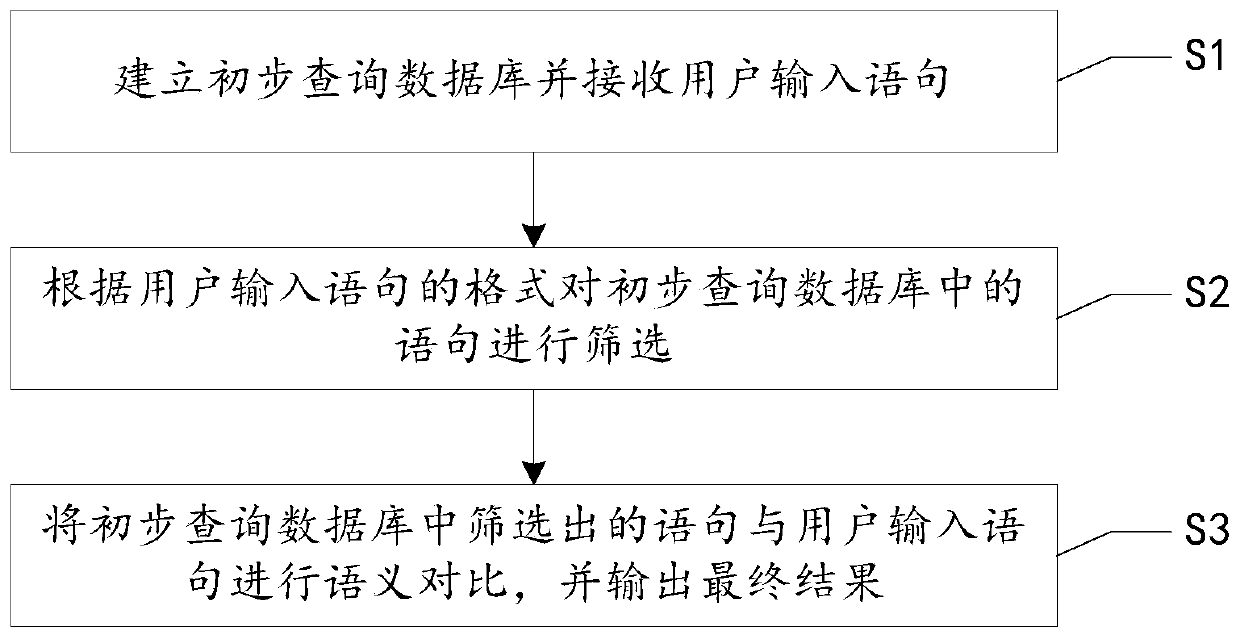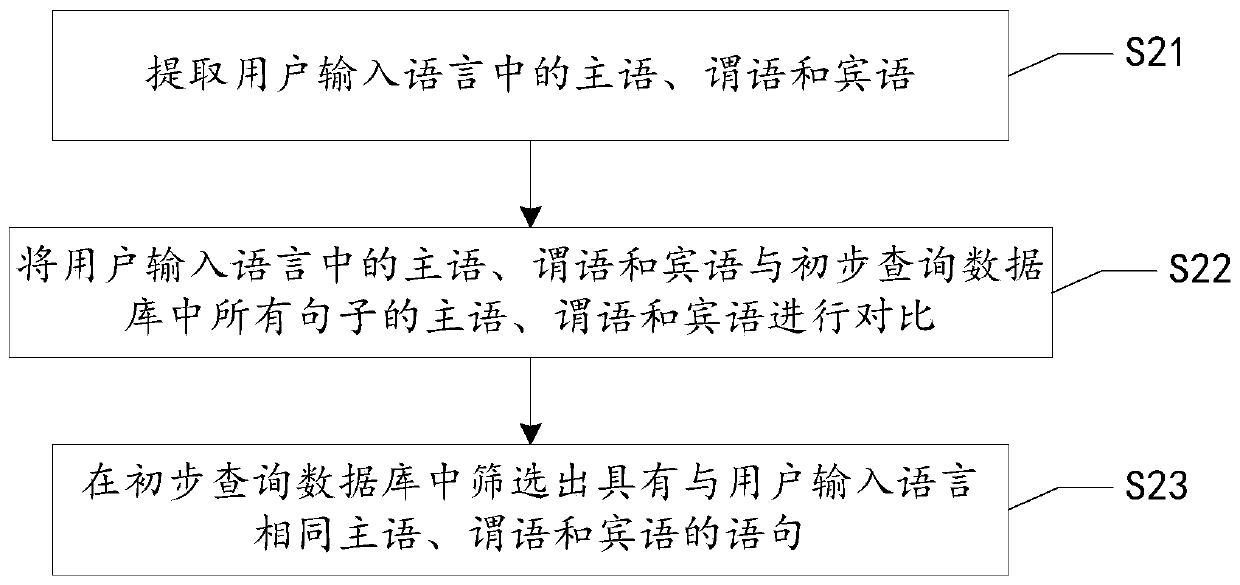Method and system for processing semantic similarity in human-computer natural language interaction
A technology with similar semantics and natural language, applied in the field of natural language human-computer interaction, can solve problems such as low semantic understanding accuracy and human-computer interaction cannot be realized normally, and achieve the effect of improving the accuracy rate
- Summary
- Abstract
- Description
- Claims
- Application Information
AI Technical Summary
Problems solved by technology
Method used
Image
Examples
Embodiment 1
[0042] Such as figure 1 As shown, this embodiment proposes a semantic similarity processing method in human-computer natural language interaction, which is realized in the following manner:
[0043] S1. Establishing a preliminary query database and receiving user input sentences;
[0044] S2. Screening the sentences in the preliminary query database according to the format of the sentences input by the user;
[0045] S3. Semantically comparing the sentences selected in the preliminary query database with the sentences input by the user, and outputting the final result.
[0046] In this embodiment, at the beginning of processing the user input sentence, first the format used for the input sentence is extracted, and the main part of the extracted question is compared to perform the first step of deletion; the specific process is as follows figure 2 Shown:
[0047] S21. Extracting the subject, predicate and object in the language input by the user;
[0048] S22. Comparing th...
Embodiment 2
[0057] Such as Figure 4 As shown, this embodiment proposes a semantic similarity processing system in human-computer natural language interaction, the system includes:
[0058] Database building module 1, used to set up a preliminary query database and receive user input sentences;
[0059]The sentence screening module 2 is used for screening the sentences in the preliminary query database according to the format of the user input sentence;
[0060] The semantic comparison module 3 is used for semantically comparing the sentences selected in the preliminary query database with the user input sentences, and outputting the final result.
[0061] preferred, such as Figure 5 As shown, the sentence screening module 2 includes:
[0062] Sentence extraction module 4, used to extract the subject, predicate and object in the user input language;
[0063] Format comparison module 5, for comparing the subject, predicate and object in the language input by the user with the subject,...
PUM
 Login to View More
Login to View More Abstract
Description
Claims
Application Information
 Login to View More
Login to View More - R&D
- Intellectual Property
- Life Sciences
- Materials
- Tech Scout
- Unparalleled Data Quality
- Higher Quality Content
- 60% Fewer Hallucinations
Browse by: Latest US Patents, China's latest patents, Technical Efficacy Thesaurus, Application Domain, Technology Topic, Popular Technical Reports.
© 2025 PatSnap. All rights reserved.Legal|Privacy policy|Modern Slavery Act Transparency Statement|Sitemap|About US| Contact US: help@patsnap.com



